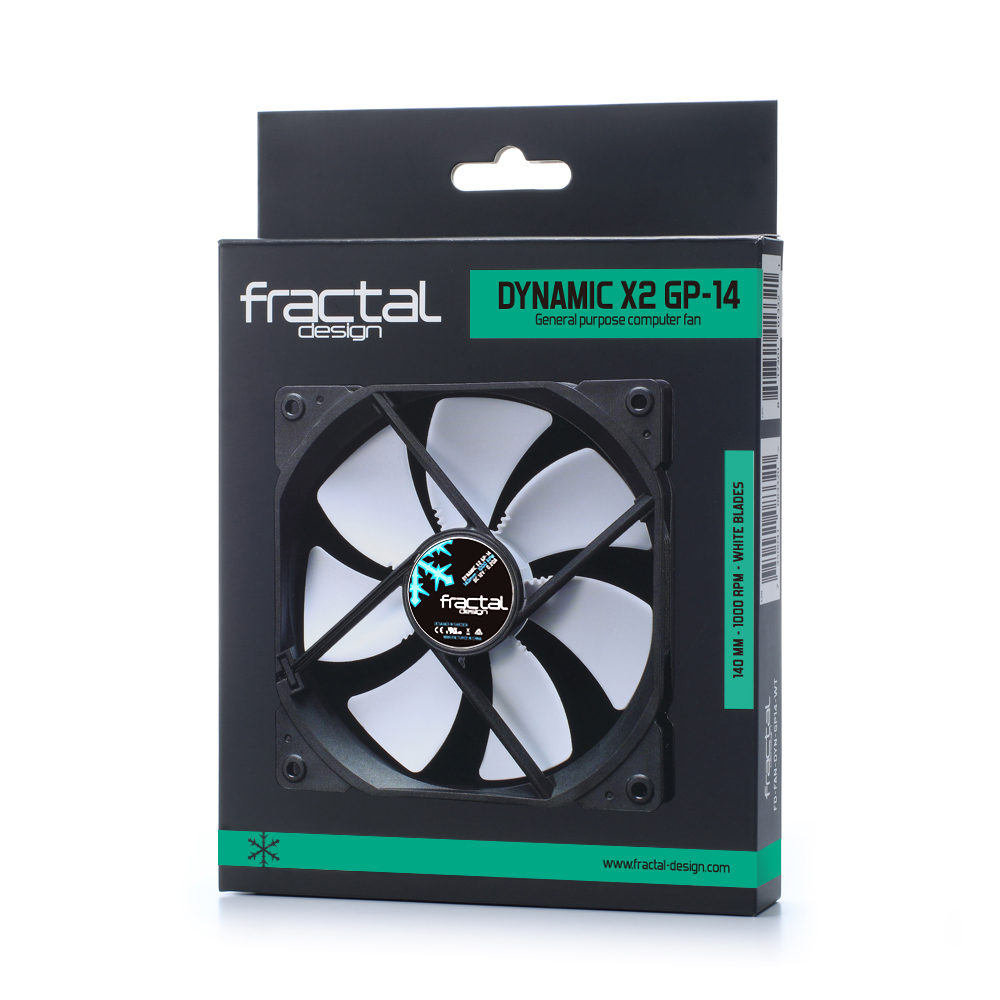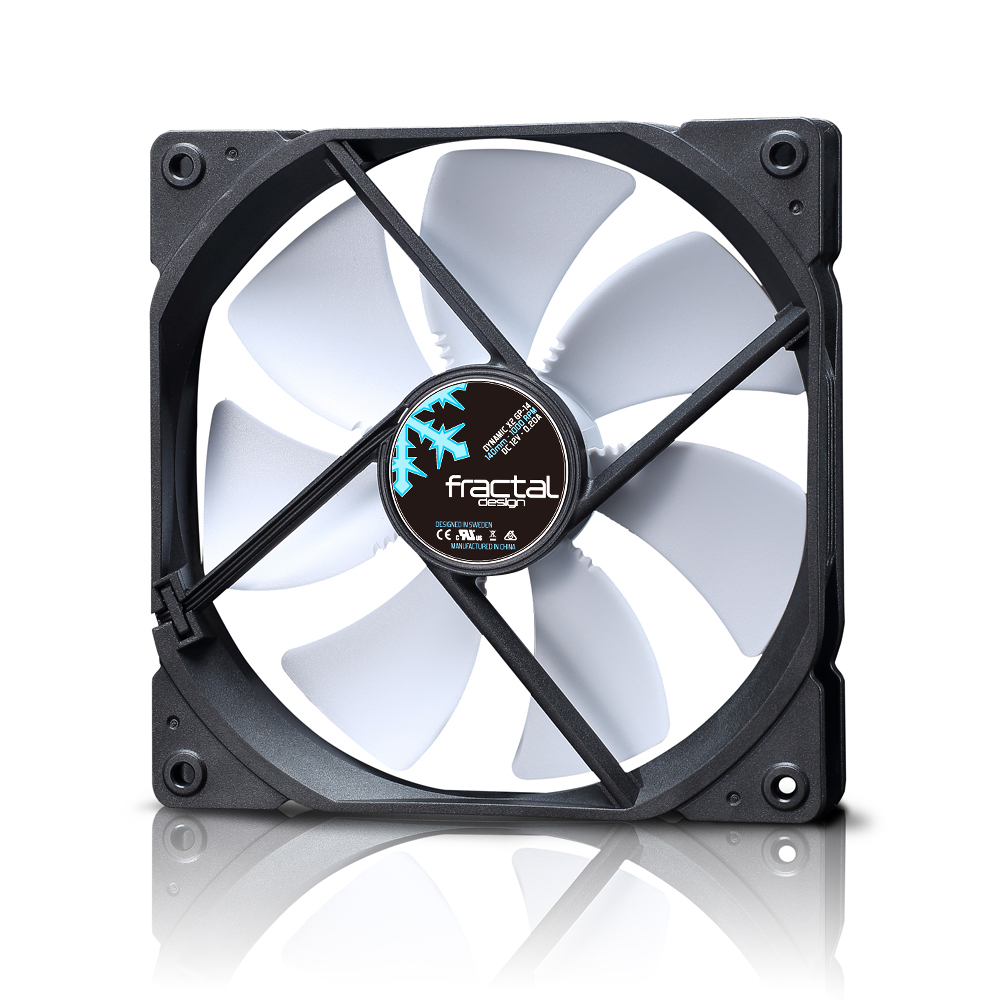Fractal Design Intros Dynamic X2 Fans With LLS Bearings
Fractal Design announced its new Dynamic X2 fan series with LLS bearings.
The Dynamix X2 fans will come in two variants: the 120mm GP-12 and the 140mm GP-14. Fractal Design said that the LLS bearings used to drive the fans should last for an average of 100,000 hours before failing. This extended MTBF rating is further helped by a counter-pull magnet that reduces axial tension on the bearings.
These fans are also designed to be exceedingly quiet, thanks in part to a new fan blade design. Spinning at 1200 RPM, the GP-12 model is capable of producing 52.3 CFM of air flow while emitting just 19.4 dBA of noise. The larger GP-14 operates at 1000 RPM, but it generates 68.4 CFM of air flow while also creating 18.9 dBA of noise, according to Fractal Design.
Fractal Design said the fans are shipping to retailers now and will be available to customers soon. The GP-12 model will be priced at $12.99, and the GP-14 has an MSRP of $14.99.
| Fractal Design Dynamic X2 Fans | ||
|---|---|---|
| Model | X2 GP-12 | X2 GP-14 |
| Dimensions (L x H x W) | 120 x 120 x 25 mm | 140 x 140 x 25 mm |
| Colors | Black Blades, White FrameWhite Blades, Black Frame | Black Blades, White FrameWhite Blades, Black Frame |
| Connector | 3-pin Fan Header | 3-pin Fan Header |
| Bearings | LLS | LLS |
| Number Of Blades | 7 | 7 |
| RPM | 1200 | 1000 |
| CFM | 52.3 | 68.4 |
| Noise (dBA) | 19.4 | 18.9 |
| MTBF (Hours) | 100,000 | 100,000 |
| MSRP | $12.99 | $14.99 |
Get Tom's Hardware's best news and in-depth reviews, straight to your inbox.
-
WFang Any static pressure numbers available for these?Reply
--> Yes, at their product home-page: http://www.fractal-design.com/home/news/fractal-design-announces-new-dynamic-x2-fansMaximum pressure 0.88 (GP-12) 0.71 (GP-14)
I suppose for the noise profile these are awesome on paper, but if static pressure is more important, they are not great.
-
JoeMomma What the heck is a LLS bearing and why should I care? I am a mechanical engineer and IDK, even Google can't tell me. Is this just a marketing acronym? Very often your writers assume the readers will know every complicated abbreviation in the electrical engineering dictionary. Please do us a favor and assume you are writing for a younger audience.Reply -
synphul If I had to guess, the LLS bearings are probably fluid dynamic bearings. The "LLS" an acronym for "long life span" since one of the major points being made on these by Fractal is the increased lifespan of 100k hrs mtbf.Reply
With the 'counter pull' magnet it sounds similar to the design of noctua's fans using the magnet in the base of their spindles to perform a similar balance function in the SSO and SSO2 bearings.
According to Fractal's site, the 100,000hr mtbf makes their longevity 'best in class' though perhaps that's just best among their own class of fans. Even noctua's redux series using the older SSO bearings sport an mtbf of >150,000hrs.
They seem to move a fair amount of air given the low decibels but the static pressure is abysmal. Any amount of restriction like intake filters and airflow is liable to fall flat on its face.
By contrast, something like a phanteks ph140-sp puts out 82cfm at only 19dba with 1.33 h20/mm static pressure (almost double that of the fractal 140mm fan) and also sports >150,000 hrs mtbf.
It may be a new design for fractal but the end results are less than extraordinary. They sort of fall in between the fractal silent series and venturi's in terms of airflow and noise but compared to the competition they seem to be lacking. Especially since the phanteks ph140-sp is priced identical and so is the noctua redux p14s 1500 pwm, the 1200rpm (dba similar to the fractal 140mm) only $5 more. Tough competition. -
f-14 junk, waste of money, cooler master sickleflows better cfm by 10+ 19db at top speed.Reply
there's two other fans better than the sickleflows even for about these fractal prices, but the sickleflows are $6-$8 best value, 3rd best performance of all the case fans on the market


